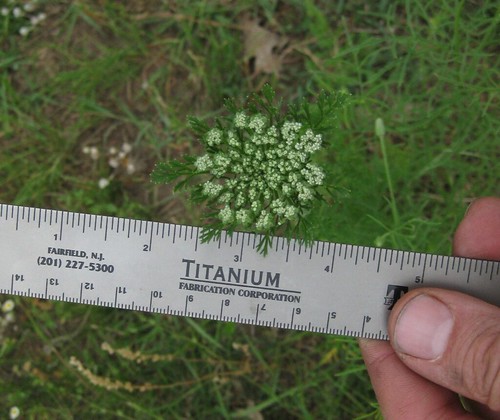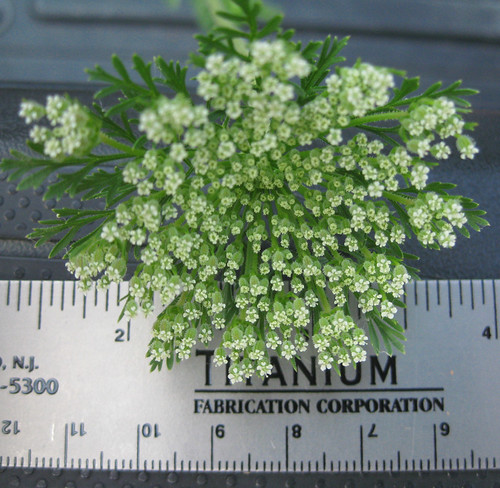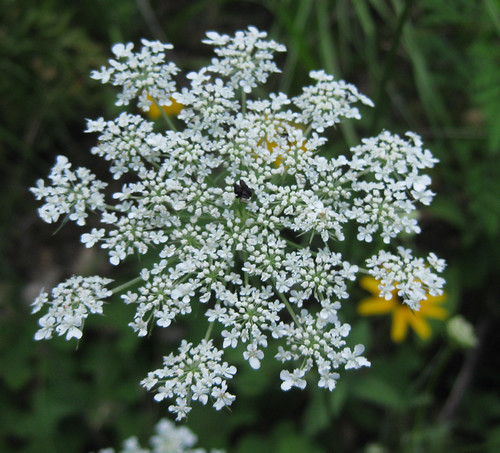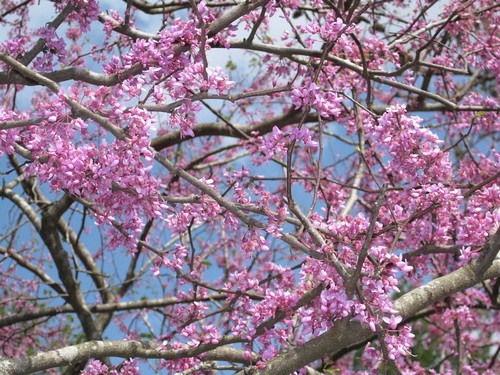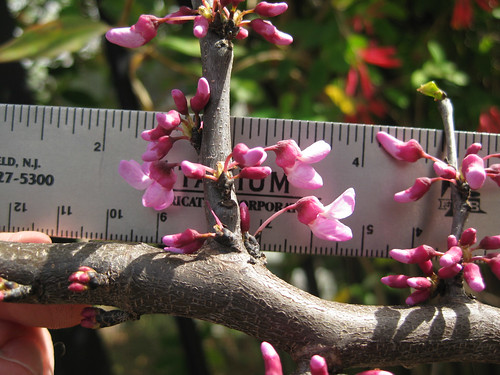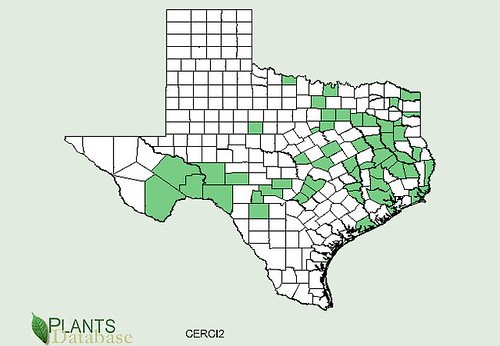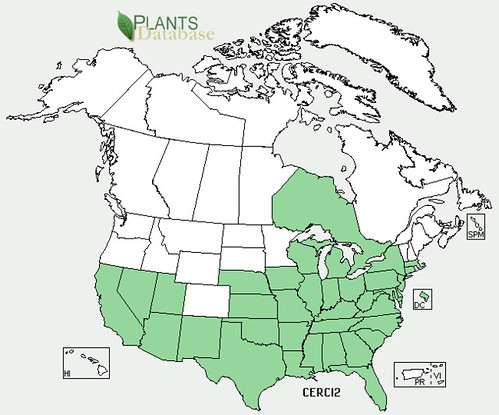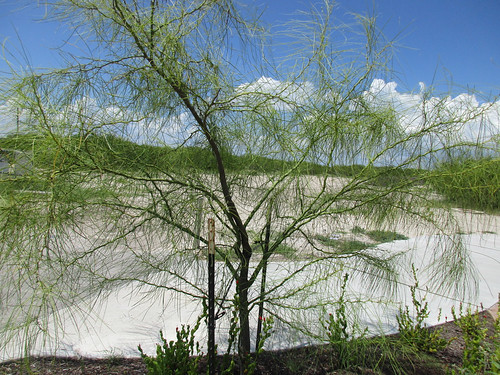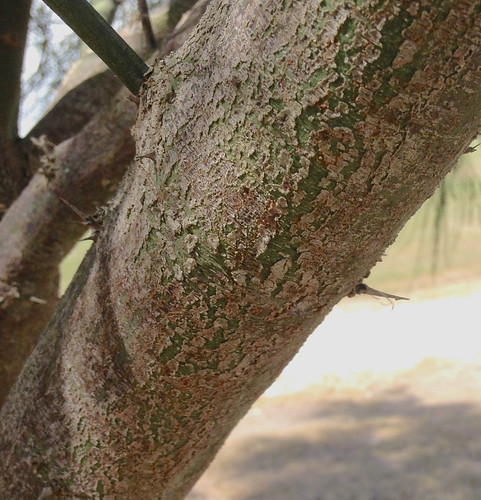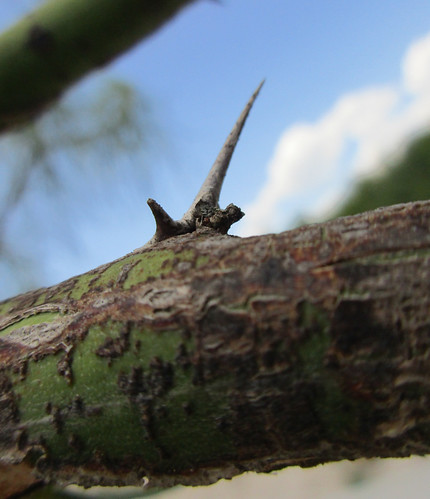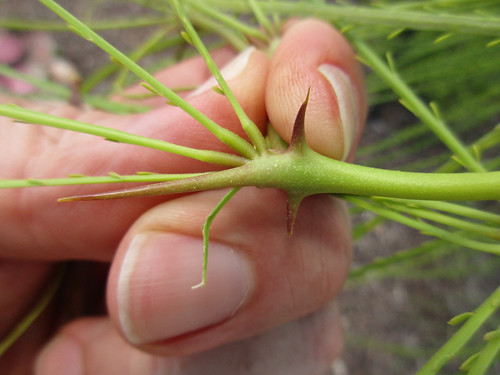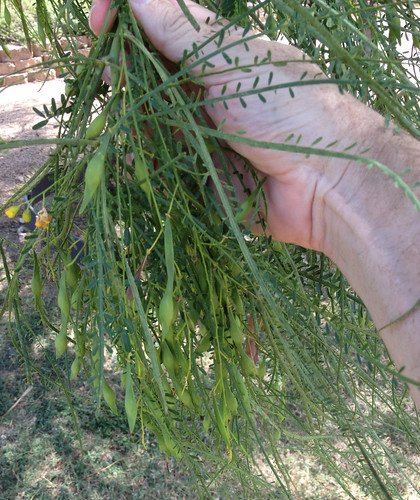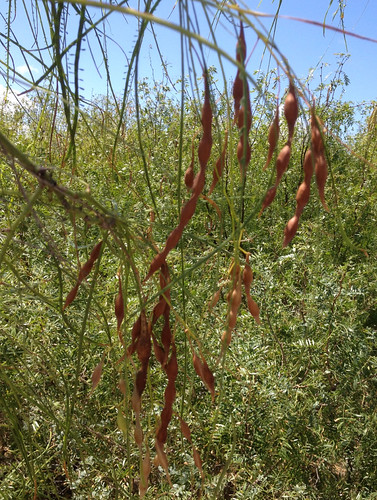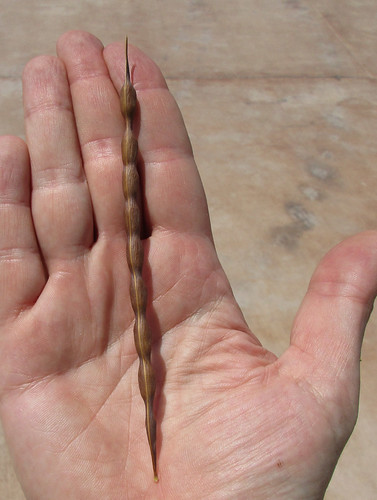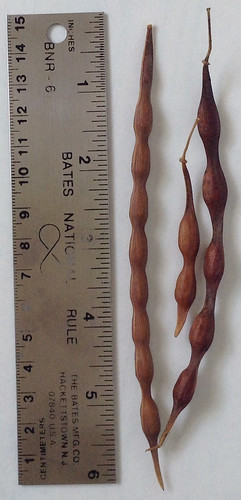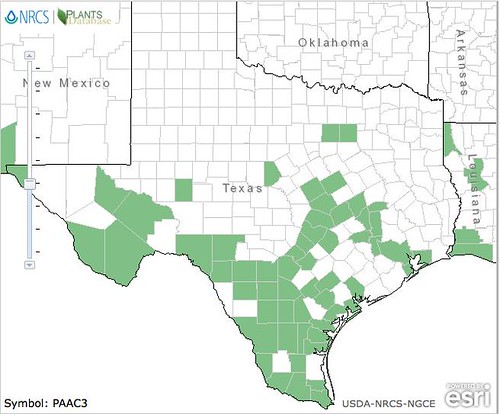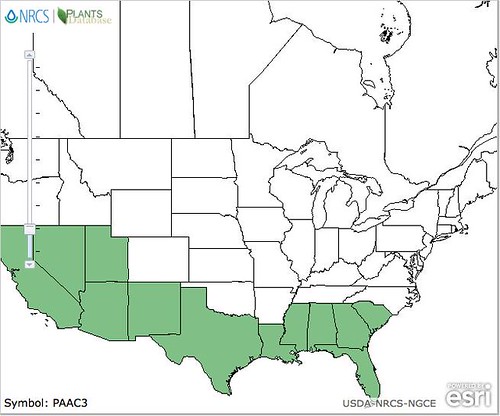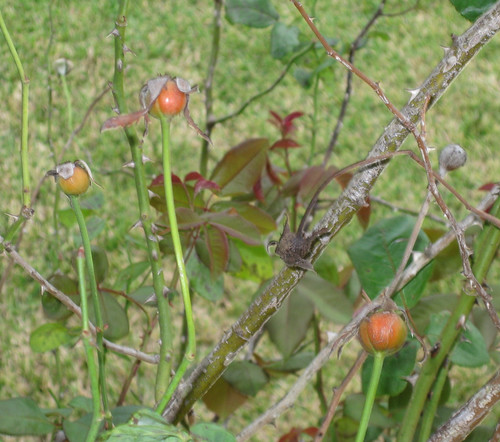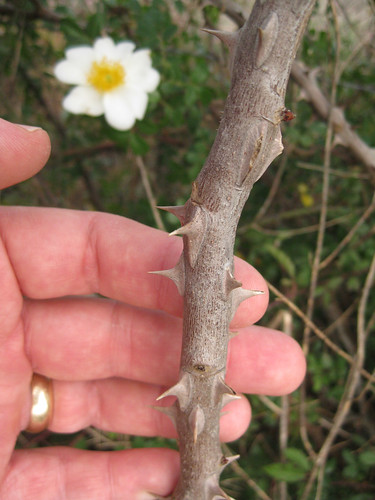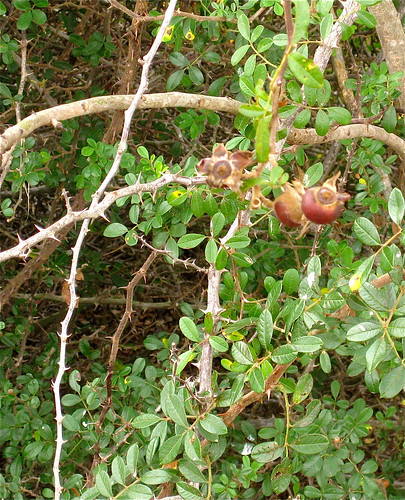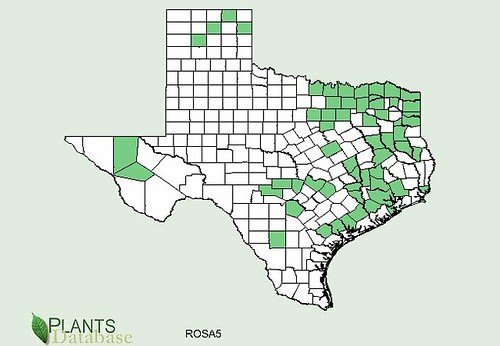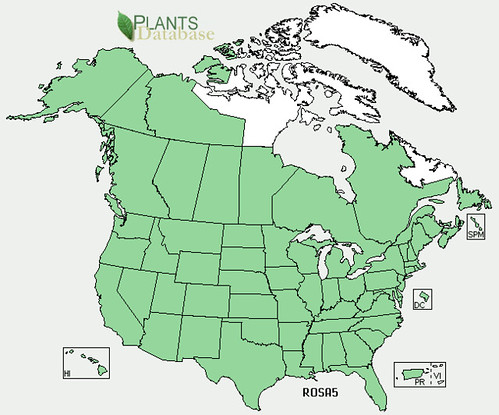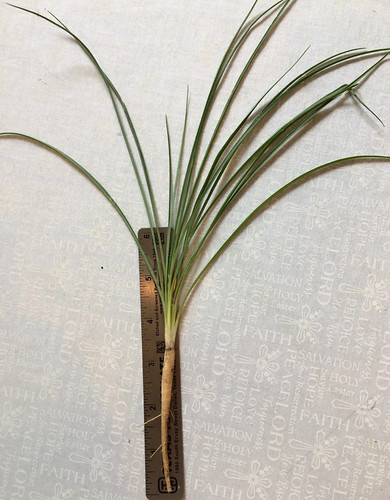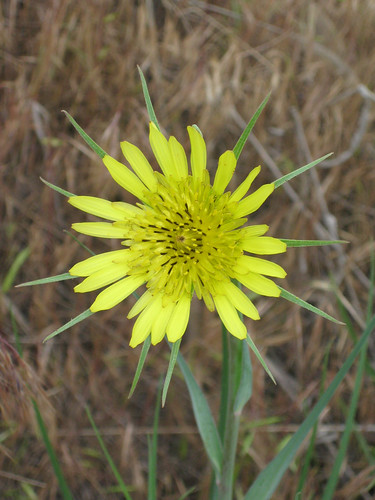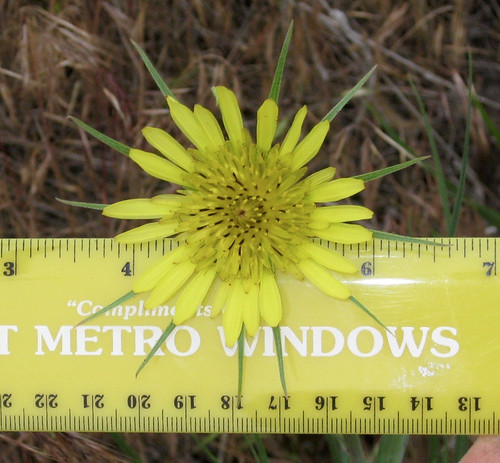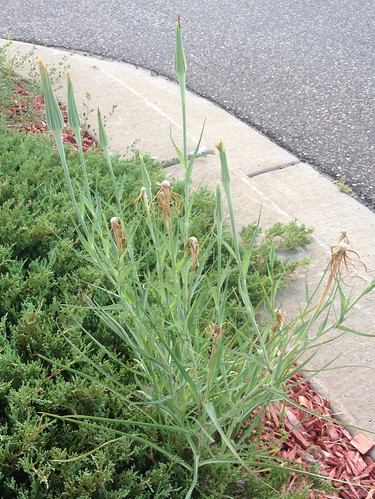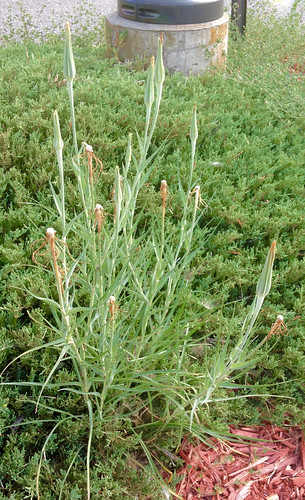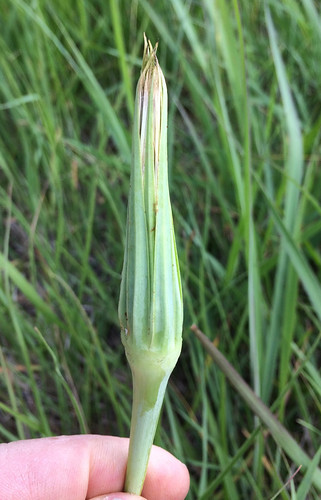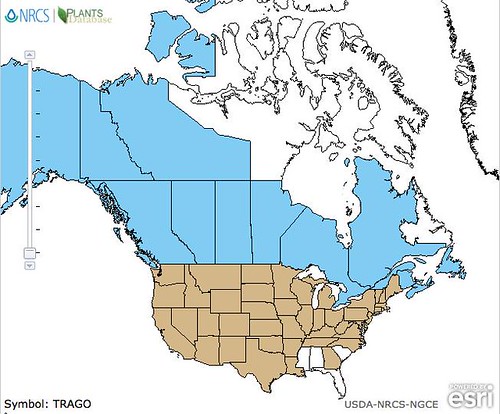Abundance: uncommon
What: young root, young shoots, seeds
How: 1st year root raw, cooked; 2nd-year flower stems peeled raw or cooked.
Where: fields
When: early summer
Nutritional Value: High in vitamin A and minerals
Other uses: crushed leaves work as an insect repellent
Dangers: don’t confuse with deadly water hemlock. Queen Anne's Lace sometimes has a small red flower in the center of the white flowers and the root smells like carrot. Hemlock has a very foul, disagreeable odor.
Wild carrot flower and stem. Note the hairy stem. Hemlock (TOXIC!) has a smooth, hair-free stem.
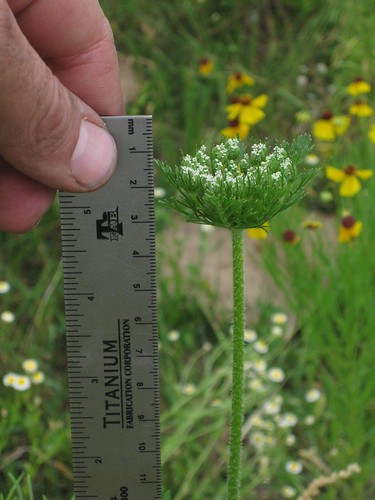
Close-up of Queen Anne's lace stem. Notice the hairs and reddish stripes.
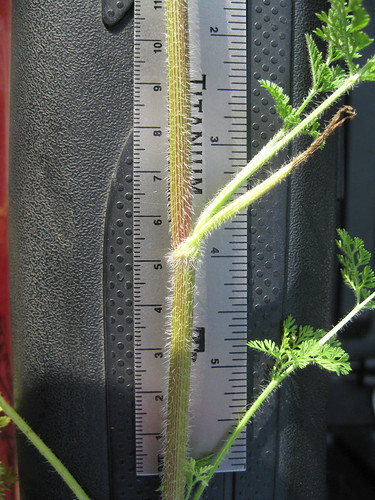
Wild carrot (Daucus pusillus) flowers lack the center, solitary red flower found in Queen Anne's Lace (Daucus carota).
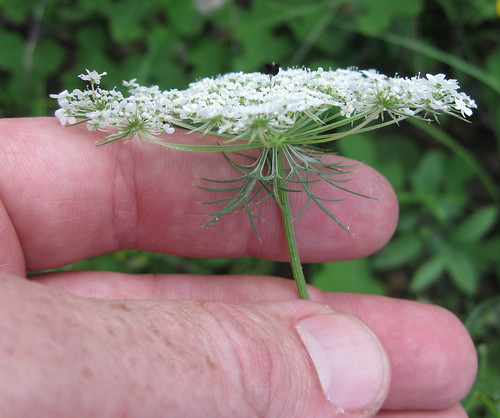
Queen Anne's Lace flowers, with the single red-purple flower in the center, marked by the blue arrow.
Young flower head before the flowers have opened.
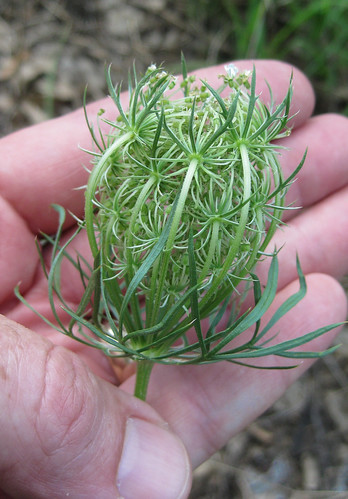
Queen Anne's Lace leaves. They have almost a fractal pattern.
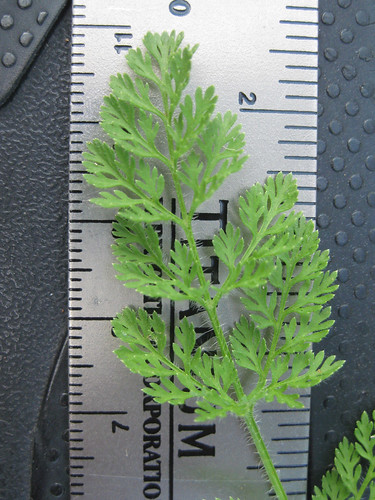
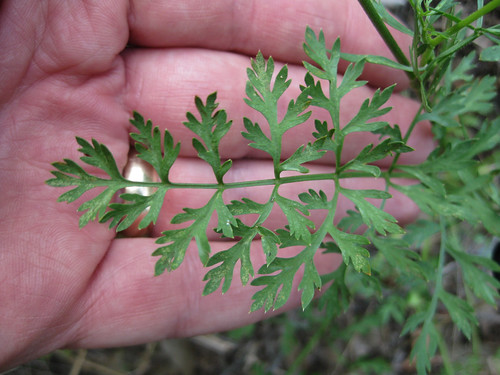
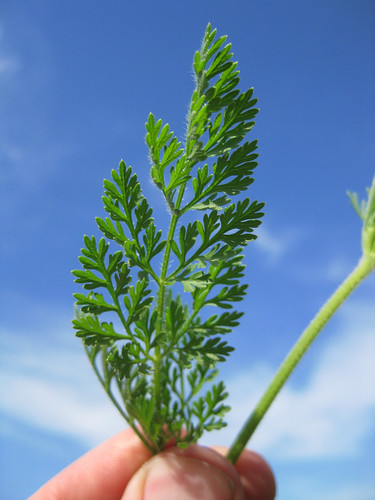
Queen Anne's lace "carrot".
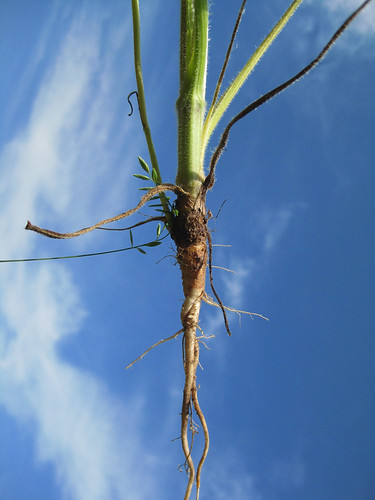
Wild carrot seed head after the flowers have gone. They close up like a bird's nest whereas hemlock seed heads remain open.
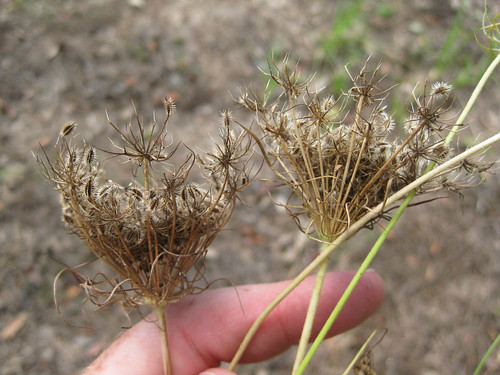
A stand of wild carrots along a road. Note the closed-up "bird's nest" aspect of the older flower heads.
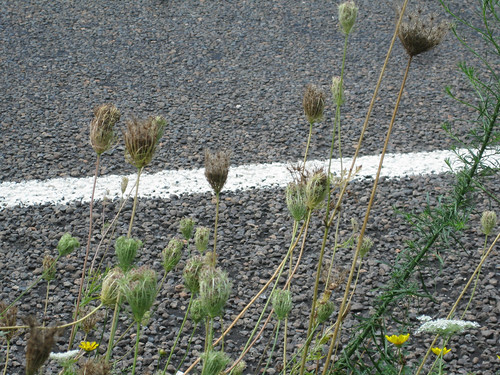
Highly toxic hemlock along a stream. Note how the flower clusters branch off from each other unlike the single stalk growth pattern of wild carrot.

Here is the toxic Hemlock flower. Note how it is much more open with large spaces between the clusters compared to the wild carrot. It also lacks the "Kermit the Frog" collar.
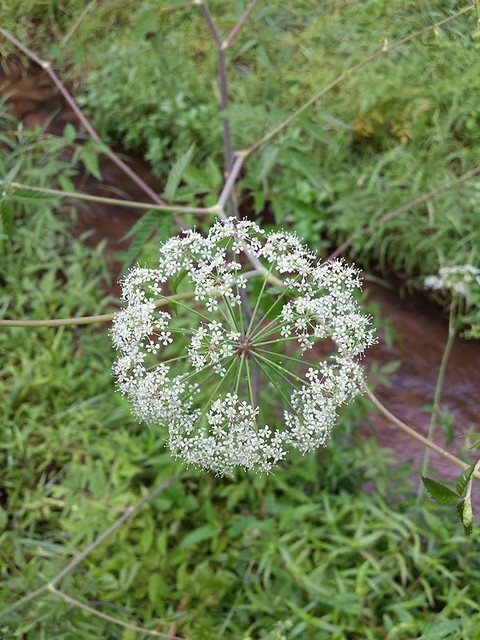
Left side is Wild Carrot, right side is deadly Water Hemlock. Note the "chambers" in the Water Hemlock root and the purple strips along the hemlock's stem. Hemlock flower lacks the "collar".

Close-up of stems and roots. Wild Carrot stem is hairy, hemlock stem is smooth.
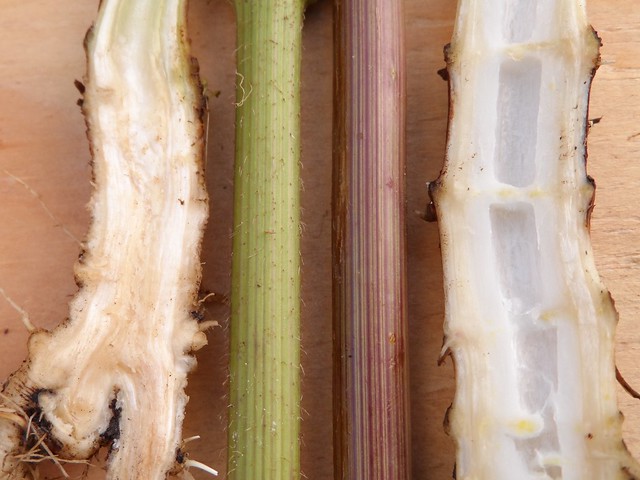
Water Hemlock leaf.
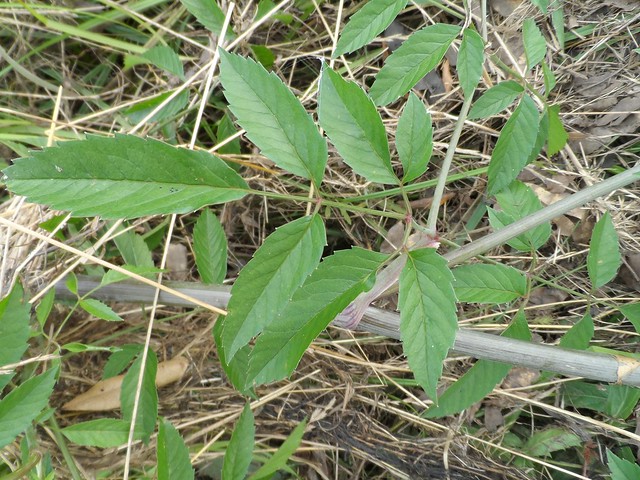
Texas distribution, attributed to U. S. Department of Agriculture. The marked counties are guidelines only. Plants may appear in other counties, especially if used in landscaping.
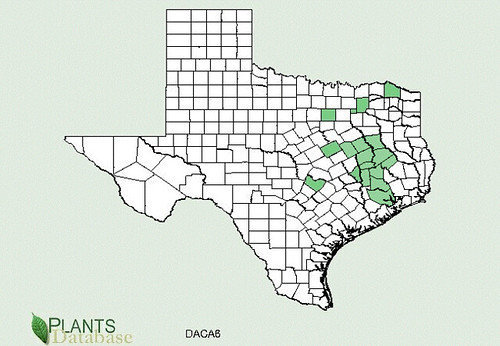
North American distribution, attributed to U. S. Department of Agriculture.
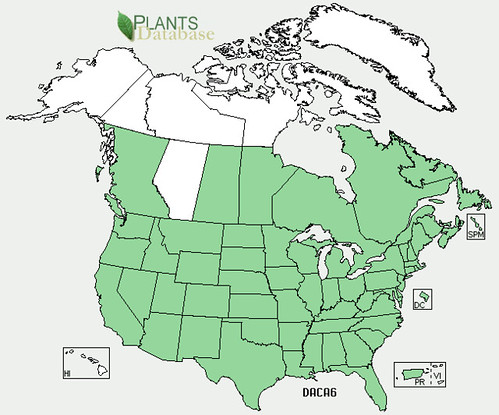
Standing in showy white clusters along many Texas roads, wild carrots are an interesting spring/summer plant. They are the mother-species of domestic, orange carrots but wild carrot roots are white and also rather woody. I usually just use the "carrot" for flavoring soups and stews but then remove and discard them before eating the meal. The seeds are a spicy substitute for celery seeds. The flowers can be made into a jelly just like elderberry flowers or used to make a delicious tea.
Hemlock is an extremely poisonous plant which looks very similar to wild carrots. Luckily there are several ways to tell them apart:
1. Wild carrot flower stem is hairy, hemlock flower stem is smooth/have no hairs.In some cases the stem hairs of the wild carrot are not easily seen but if you run your finger along it's stem it will feel like day-old razor stubble.
2. Wild carrot flower stem is solid, hemlock flower stem is hollow.
3. Wild carrot flower stems are green and occasionally have long, reddish stripes. Hemlock flower stem have red/purple spots of assorted size and the occasions partial stripes but will be purple at the bottom.
4. Wild carrot flower stems are not powdery, hemlock flower stems often have a white powder on them.
5. Wild carrot flowers (umbels) are arranged in a a thick, tight pattern with only a small amount of open space between them. Hemlock flowers are much more sparse and have open areas between the smaller flower clusters making up the umbel head.
6. Wild carrots usually don't grow more than 3-6 feet tall, hemlock can grow 6-9 feet tall.
7. Wild carrot flower umbels will curl up into a "bird's nest" when they dry, hemlock umbels remain in their original "umbrella" shape when they die and dry up.
Buy my book! Outdoor Adventure Guides Foraging covers 70 of North America's tastiest and easy to find wild edibles shown with the same big pictures as here on the Foraging Texas website.

